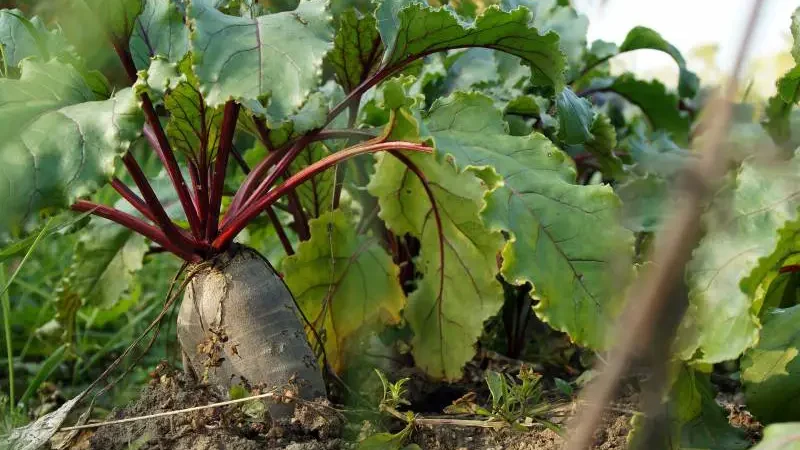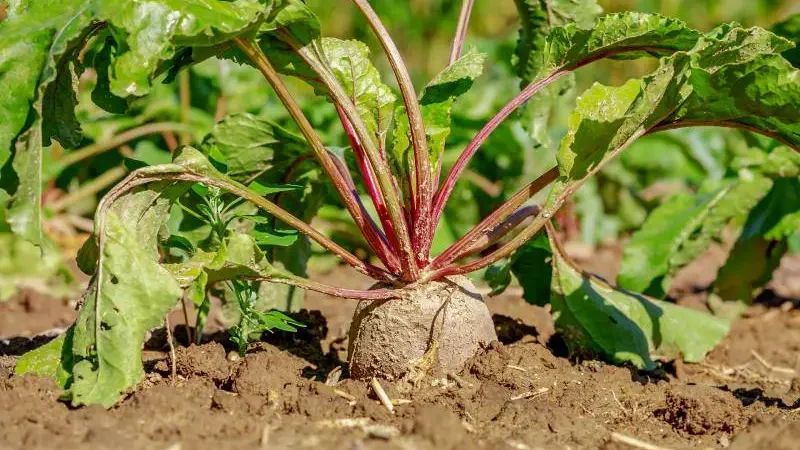How To Grow Beets From Beets [In Simple Steps]

Growing beets from beets are easy, fun, and rewarding, especially when you know how to grow beets from beets. They come in different shapes and colors and are grown from top to root. The maturity of beets varies depending on the type of soil, climate, and efforts put in.
Plus, the most suitable soil must be loose and very well-drained.
What are Beets?
Beets are an incredibly nutritious and versatile root vegetable that comes in a wide selection of colors, sizes, and flavors, making them a great addition to any meal. Packed with essential nutrients, beets are a great source of protein, fiber, folate, and vitamin C, as well as important minerals such as magnesium, manganese, potassium, iron, and phosphorus.
Eating beetroot has various health benefits, as research has shown that it can help lower blood pressure, improve the efficiency of our mitochondria, and fight inflammation. It can also support our brain health, as studies have found that beetroot can help to improve cognitive function and memory.
Beetroot is a healthy ingredient and incredibly delicious and can be used in various dishes, from salads to soups to even desserts.
With its wide variety of colors, sizes, and flavors, beets make a great addition to any meal while offering you a range of health benefits.
Beets are also classified as superfoods since their leaves are an excellent source of fiber. They are also a source of vitamin A and antioxidants.
Beets thrive in climates characterized by temperatures where days are warm and nights are cold. However, sunny areas produce the highest quality. You can also grow beets using the beet tops and roots.
How To Grow Beets From Tops
Beets provide edible leaves and roots, and growing beets from tops have been practiced for centuries. Sourcing for a healthy top is a must. Here is a step-by-step procedure to grow beets from tops:
Step 1: Prepare the Area
Start by preparing the garden by loosening the soil. Ensure that you remove all the weeds, debris, and stones. Half-spade depth tilling works wonders to loosen the soil You must also water the garden regularly if you do not use rainwater.
Step 2: Prepare the Beet Top
Prepare freshly cut beet tops by trimming the leaves but avoid tampering with the bud. Ensure the stem length is 1 inch (2.54 cm) on average. Choose healthy tops for better yield, which you can get from the local grocery or beet farmer.
Step 3: Resizing the Beet Crown
Trim the beet top and leave 1 inch of the root to ensure enough allowance above the soil once planted. A root should be strong enough. If the top is too young, it might rot or produce an unhealthy plant.
Step 4: Planting the Beet Top
Planting should be the easiest part. First, make half an inch hole ready for planting. Depending on the type of soil, you might consider adding some manure. Place the cut top in the hole and spread the soil, leaving an average of one inch above the ground. Water moderately if the soil is dry, and wait for the beet to sprout in a few days.
During planting beetroots, spacing is essential. Enough space ensures the plants do not compete for nutrients and water, and the beetroot needs ample room to develop.
However, the lack of ample space should not discourage you.
- The standard spacing is 1 inch (2.54 cm) between the plants.
- The depth should be 0.5 inches (1.27 cm).
- For better weeding or tilling, the ideal space between the rows is between 12 and 15 inches (38.1 centimeters).
How To Grow Beets From Beetroots
Growing beets from beetroots are fuss-free and fun. The process is straightforward whether the end products are for sale or home consumption. However, you must check for infections before planting.
Here are steps you could follow to grow beet from beetroots:
Step 1: Prepare the Garden
Prepare the garden by ensuring that there are no weeds or debris and the soil is loose enough and well-aerated. You should loosen the soil at about 0.5 feet (15.24 cm) deep to allow the beetroot bulbs to expand as they grow.
Step 2: Get the Right Beetroot
Select healthy beetroots from the local supplier, ensuring that you use minimal pesticides from planting to harvesting. The sow beet seeds should come with complete tops, so do not accept tops with missing buds.
Step 3: Prepare the Beet Top
Prepare the beets by trimming the leaves or greens off (these can be used for cooking to avoid waste). Remove the beetroot top and leave 0.5 inches (1.27 cm) of the stalk.
Step 4: Planting And Spacing
Like any other plant and vegetable, spacing during planting is essential.
The spacing should be:
- 1 inch (2.54 cm) between the plants
- 2 to 15 inches (38.1 cm) between the rows
The depth should be half an inch for the bulbs to grow and develop under the soil.
Step 5: Water the Beet Tops:
For dry soils, watering after planting is recommended. Monitor the moisture and water when the soil is drying up.

Helpful Tips For Growing Beets From Beets
Weeds and Pest Control
Whether growing beets from beet tops or beetroots, the garden needs to be sprayed with herbicides and pesticides. Herbicides will control some common weeds. Pesticides will, on the other hand, control common pests that attack beetroots. Both reduce the possibility of weeds and pests and usually last the entire crop season.
Patience Is Required
Depending on the beetroot variety, it takes between 50 and 70 days to reach maturity. You can start harvesting when the root size is that of a golf ball. However, young roots are ideal for salads, but waiting for them to mature fully means better yields.
Watering
When ready for harvesting, we recommend you water it to make the soil soft for pulling. Pull the leaves and top firmly in a vertical movement to ensure they are damaged. You might consider using a gardening fork to dig out the beetroots.
Root Quality
Only the undamaged roots need to be stored. Nevertheless, you must separate the damaged root from the good ones to help avoid bleeding, which affects the taste and color of the harvested vegetables. Before storing, grade the beetroot by size to help them stay fresh longer.
Conclusion
Whether you are growing beets from harvesting beet tops or roots, there is no shortcut. Soil type might affect the quality of mature beetroots, but working with a beetroot expert can improve the yields, especially for the first-time farmer. Moreover, beets are not labor-intensive and can be grown in pots, in a small kitchen garden in the backyard, or on large farms.
Happy Gardening!